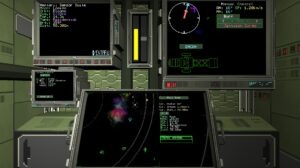
Most games that put you in the role of an independent space pilot or captain are pretty immediate in how they model space travel. There’s your ship, you in the cockpit, and the open interstellar road, as it were. There are very few, if any, games that take a different tack to space travel and combat: one less a fighter pilot and more more a submarine captain. Enter Objects in Space by Flat Earth Games. This game definitely takes a more deliberate, Firefly-esque approach to space travel and combat, including stealth and combat, while melding in elements from naval games such as the submarine sims of our youth. I was desperate to learn more about this fantastic game, so after contacting the developers, I penned some questions for them. Please enjoy the answers below provided by Lead Designer Leigh Harris and Lead Programmer Rohan Harris (yes, they’re brothers ;), and thanks for reading. :)
Brian Rubin: Thanks for taking my questions! First off, where did the idea for Objects in Space come from, and how long have you been working on it?
Rohan Harris: The initial idea came from my brain, when I was about fifteen years old. I’ve almost literally been dreaming of this game my whole life. I spent so much time watching 1970s and 1980s sci-fi films & shows that I began to fantasise about what a game would be like which honoured the “slow, ponderous, nerve-wracking” feel that non-Star Wars space battles tended to have. It stuck in my head for ages, but always felt like a “this is too complex – it’ll never happen” sort of scenario. Until we were making games for a living. So I pitched it to Leigh…
Leigh Harris: At the time, it was late 2013 and we’d only just finished our first game, TownCraft. We’d brought in contractors for all of the art and sound on profit share arrangements, and decided to make a game which played to the strengths of the two of us – design and code. The notion of a sub-sim in space worked perfectly. We could spend our days making an intricate, complex game world with heaps to do while restricting the art requirements to several key indoor locations only. After all, what would a submarine benefit from a main view screen at the front? Anyone you were trying to kill or track would be too far away for a view screen to matter. And we were going for an era well before the ‘enhance’ technological stuff of Star Trek.
Brian: I have to say I love the whole conceit about “submarines in space.” Did you folks play a lot of sub sims back in the day, and if so, which ones did you enjoy most?
Rohan: Oh, I absolutely did. I have to say I was generally more into nuclear / cold-war sub sims than the more popular WW2 era stuff, so I spent most of my time playing 688(i) and then, eventually, Dangerous Waters. I still have it installed.
That said, one of the games that absolutely blew me away and I also still re-play to this day is Silent Hunter III. I think they absolutely nailed the feeling of being on a sub. I love the way the interior is modelled, and it gives you a sense of claustrophobia, especially when depth charges are going off around you. This is actually the biggest influence on the interface/style of Objects in Space, I’d have to say. At least in terms of presentation.
Leigh: Mine were more the space games. Open world traders and the like. Lightspeed (aka Hyperspeed) was a huge influence for me, but so were a few games somewhat left of centre of subsims. Hardwar (a brilliant, but long forgotten psuedo-space trader from the late 90s) was a big one for both of us too.
Brian: The idea of cat and mouse in space sounds amazing, how is it being implemented so it has a balance of fun and believability?
Rohan: This was something which concerned me a great deal early on, and Leigh too, I know. But one thing which gave us more confidence was when we began to design & implement all the combat, and began to realise that we really were actually quite lucky – we have the best of both worlds with Objects in Space.
That is, we’re basing it off submarine warfare, but we aren’t obliged, for the sake of ‘realism’ to keep any specific mechanics or numbers in the same way a genuine simulation is.
Which means we’ve been able to let someone play a combat situation, see which bits confuse, annoy or seem overly complicated, and then tweak the game accordingly. In quite a few cases we’ve been surprised – people are much more savvy than we expect, and we’ve actually ended up putting lots more ‘believable’, complex stuff in the game as we alpha test.
Leigh: Yeah, we’ve found (at the expos we’ve taken it to so far) that people have been quite quick to get it, so anything which we deemed cool but perhaps too complex has ended up being brought in. It’s really boosted our confidence.
But when something awesome happens, even if it isn’t subsim-realistic, we can leave it in there. For instance, one guy at an expo had an inbound missile and had his own missile tube spun up and ready to fire on the enemy. He switched targets and fired *at* the incoming missile. Needless to say it had to miss and re-acquire once or twice before actually making contact and detonating, but he did it. And it was cool. So in it went!
Brian: How is the galaxy in Objects in Space being constructed? Is it handcrafted, for example, or procedurally generated? If it’s fixed, is it varied enough to encourage exploration and discovery?
Leigh: It’s a combination of both handcrafted and procedural. We began with a rough number of star systems and a backstory for how humanity got there. Then, we took inspiration from nations of the real world and divided the Objects universe up into new ones similar to those. Over the course of nearly two years, I wrote a dense wiki which detailed some 50 years of the colonies’ history. Over the course of writing it, the resemblance to the existing nations became less and less and they each morphed into their own entities.
Now that they’re done, we’re ready to write the portion of the story the player will actually experience themselves. To do this, we assembled a team of seven writers to write short stories. These will be stories the player will directly engage with, and currently they all take place near the beginning of the game. Rohan and I will jump in and tell the story of the next chunk of time in the universe at large, then the writers come in again and write short stories for that part of the game’s timeline. So if one of their characters has set up a new life for themselves in a particular star system and the next step of the grander plot sees that planet destroyed, their short stories have to adapt to the changes over time.
In this way, the stories the player experiences will be very different depending on where they go and who they encounter in the universe. They’re very time-specific, so anyone playing the game again will likely have a very different experience.
We’ve got a dozen populated star systems in all, and about another two dozen which are unpopulated by humans but where battles can be fought and lurking pirates may be found.
The procedural stuff are the more generic tasks. Odd jobs and bounty hunting missions are the sort of fodder where many of them will be hand-written, but we’ll procedurally generate them as well to add quantity and variety.
Brian: How is the economy modeled in the game, and how much affect does the player have over it?
Rohan: Our first game, TownCraft, was also an attempt at a dynamic economy. I was a little concerned about the problems associated with that, having heard about the horror stories of, say, early Ultima Online, etc. But we ended up coming up with something which was sort of a half-way between a fully dynamic economy and a static one.
This is going to be an extension of what we learned on TownCraft. So, individual stations & sectors & factions will have goods that they produce, desire, etc, and this will affect the prices of those items, along-side how recently they’ve had those items sold to them. So the player can dump a lot of goods in one place, even if it’s something they want, and find that quickly the supply is greater than the demand, the cost will go down.
So, it’s semi-dynamic. The player can affect it both through trading and (sometimes) through other decisions & actions, but we’re putting locks in place to stop the economy being entirely destructible.
But it’s early days yet – so once we’ve got a full trading beta going, we can make further decisions from there based on how it plays.
Leigh: Narratively, you’re in a one-person freighter. You’re the little guy. We deliberately wanted you to not be some gigantic galactic hero, and as such, your influence is limited to that of what you’d expect from a crusty cargo-hauler.
Brian: Besides trading, what other non-combat options are available to the player to make money? Can we ferry passengers, for example?
Leigh: Passengers will be available for transport from place to place if the player chooses to take them on board. All our in-game communications are handled in text, so you’ll definitely have plenty of shipboard conversations with the game world’s inhabitants to reveal more about the cluster you find yourself in.
Outside of that, you’ll be able to become a scavenger, perform scientific scans in dangerous parts of the cluster or perform other reconnoitering jobs, investigating mysteries from the many strange goings on which occur and more.
Brian: Will there be side missions for the player to undertake, such as guild missions in Privateer, for example? If so, what kind of missions can the player take?
Leigh: There aren’t so much missions in Objects in Space as there are jobs. We don’t have particular strands which make it that clear cut. So if the player wants to be a pirate, they can just outfit their ship appropriately, befriend the right people to get the skinny on where the weakest shipping lanes are, and go for it. No tests or inductions into secret societies.
Of course, there are plenty of organised crime gangs, pirate organisations, smuggling operations, paramilitary groups and pseudo-official militaries which are one or two steps removed from a government, but you’re always playing the hired gun, free to leave or join as you see fit.
Brian: How involved is combat? Is it more toward the submarine side of things, where one has to set bearings and what not, or is it more a point and click affair?
Rohan: I would say that in most ways the combat is slightly simpler than nuclear submarine combat in games like 688(i) or Dangerous Waters. For instance, you can survive a missile hit and repair your vessel. It’s still very, very bad, of course, but it’s not always a game-over event, unlike with submarines & torpedoes.
That said, we’ve also got a huge amount of complexity in the ship’s customisable and repairable systems & components, which adds a different layer. For instance, after a first pass you may find yourself scrabbling to perform ad-hoc repairs to your weapon launcher after it’s damaged by a nearby EMP blast, scavenging parts from other parts of your ship to get it working again in time to take out a pirate who’s about to do you in with a killing blow.
In terms of combat manoeuvres, we are currently toying with ‘automating’ some of them. So, hard turns to port or starboard and dropping countermeasures are currently all done manually, but we are aware that many players (including some of our testers) would rather simply enjoy the intellectual challenge of making tactical decisions, without suffering due to a hand-eye coordination mistake.
Brian: What kinds of ships will we have access to in the game, and will ships be crewed by multiple entities (i.e. you and the AI?) or will they all be single pilot affairs?
Leigh: We’re going to have a minimum of three different types of ship chassis at the outset, and each of these will be completely customisable top to bottom. So while some of the ship types are better at being certain things, nothing stops you from ripping out all the modules it comes with as standard and replacing them with your own Frankenstein set of modules to make it better at your brand of gameplay.
Each of the ships will be designed to be able to be piloted by a single person, however, so no AI counterparts will be joining you on your voyages.
Rohan: That said, I’ve been building our engine to be hugely extensible. So while our game isn’t designed to do that right now, our options are wide open for a variety of things I may begin experimenting with in the coming months…
Brian: Can one loot and/or acquire other ships via boarding?
Leigh: Loot, yes, if you have the right equipment, but acquire? No.
Rohan: The game isn’t built to handle fleets. That’d be a whole different kind of game. However, the system used to let you dock with space stations and enter them is actually one which doesn’t care whether the vessel in question is a space station or a ship.
So, in theory nothing stops you docking with a stationary / willing target and boarding via the airlock. We intend to use that for one or two jobs some of the writers have pitched. It’s still early days, however, so we aren’t sure just best to use it just yet.
Lots of low level stuff like that is possible with the Objects engine, but we’re trying not to let ourselves (and everyone else) down by letting feature creep blow the project out.
Brian: Does your character have any RPG-like skills, such as sensors or piloting skills, or is everything left up to player skill to accomplish?
Rohan: No. Your skills are entirely your own. The only ‘stats’ that matter here are your finances, your ship and its cargo, and your actions.
That is, the game tracks your actions both in terms of scripted decisions (you chose to help a person on Angoda station track down their missing daughter, for instance) or simple decisions of combat or trading (you chose to move medical supplies to somewhere that needed it despite the sale value being very low, or currently owe over 7000 credits to a loan shark in some obscure system).
Choices like these (some of which may not even seem to be choices at all) will affect the game the whole way through. All these will affect other things that can happen to you.
Brian: How does navigation work? Will there be any kind of autopilot, for example, or is it a manual affair?
Leigh: Both. Generally, you’ll open up the navigational display, select the moon, planet, jumpgate or empty part of space that you want to travel to and hit ‘engage’. The ship will automatically rotate using the reaction control systems (RCS) and engage the main drive to get you there.
Of course, that can be slow. If you want to pull off a high-speed perpendicular turn away from an incoming missile, manual control will allow you to rotate and control the ship in real time on your own.
Then there’s the possibility that your navigation systems fail completely and you are required to use manual control to get back to a friendly starbase.
Brian: Will there be any kind of editing or modding capabilities in the game?
Rohan: Honestly, given the way we’ve built the engine, it’d be more effort to lock people out of modding than to just let people do it!
Everything from the world’s layout to the starbases to the ship classes to the ship modules to the story are all kept in simple, legible configuration files which anyone can edit. As for things being specifically intended to be moddable, the main field I’d love to see people start playing with is user interface.
You see, every monitor has a UI designed using a simple text system. So we’re designing the UI for each specific class of ship, but we’ll let players create their own replacement screens. As a result, we hope to let people find their own customised control interfaces. For instance, a player could create a ‘combat control’ screen, specifically giving them quick access to common defensive manoeuvres, sensor information about nearby enemies, etc.
That’d be doable without a line of code.
Brian: Is there a story to the game, and if so, can one ignore it like in Elite, or does it interweave itself into the gameplay like Privateer or Freelancer?
Leigh: Hmm, it’s a tough one to say that it kind of does both of those things, but it does. I’ll explain: the story of the game isn’t the story of the player. ‘The story’ is of the Apollo cluster, and that’s one the player can eagerly follow along with by reading all kinds of news stories and articles about what’s going on which vary from system to system, and even investigate some elements of it themselves.
They can ignore it, but they’ll find that by knowing what’s going on in the wider cluster, it gives them an edge. They’ll know where and when certain goods are likely to be in greater or poorer demand by paying attention to the news, and its inescapable to follow the story if you’re that sort of diligent player.
Similarly, if you’re picking up passengers from star bases, they might have a friendly conversation with you, which could (or could not) lead to unexpected places while in transit.
That all said, we’re thinking of having a sandbox mode, but even that would have fluctuating markets based on programmatic political outcomes, so there’d still be narrative of a sort to optionally follow, even in that setup.
Brian: Finally, what are you most excited about in regards to the game itself?
Rohan: Owning my own space ship, and tailoring the little details to suit me. I’ve never had a space game that let me really get down into the nuts & bolts of my ship’s engine, optimising and letting me tweak it just the way I like. Space games always seem to gloss over the actual operation of the ship, and to me, growing up on Star Trek and the sci-fi of the ‘70s and ‘80s, making a ship feel ‘real’ and ‘functional’ is something games have never quite focused on.
Leigh: For me, it’ll be the customisation. The sense of ownership over my vessel. We’re really really close now to having it be functional enough that you can fly from one part of the cluster to another under your own steam. That, for me, is what it’s all about. Getting lost and seeing what happens.
Brian: Thanks for your time!
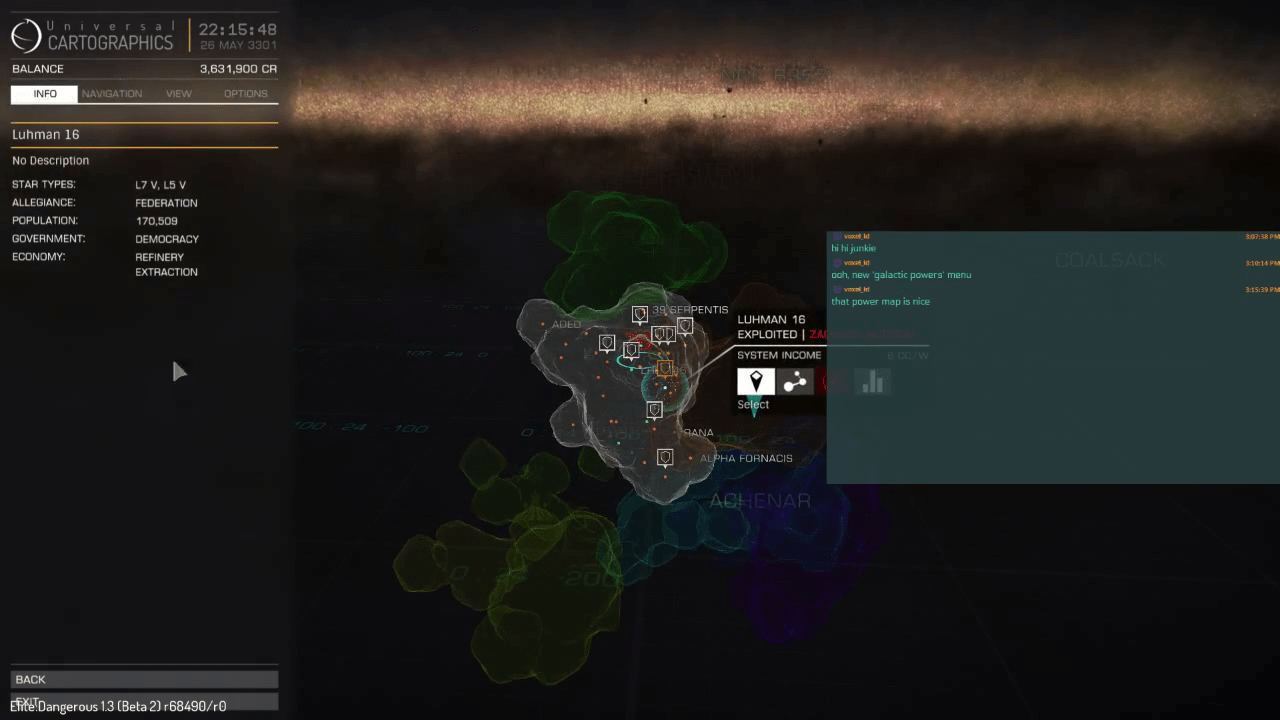
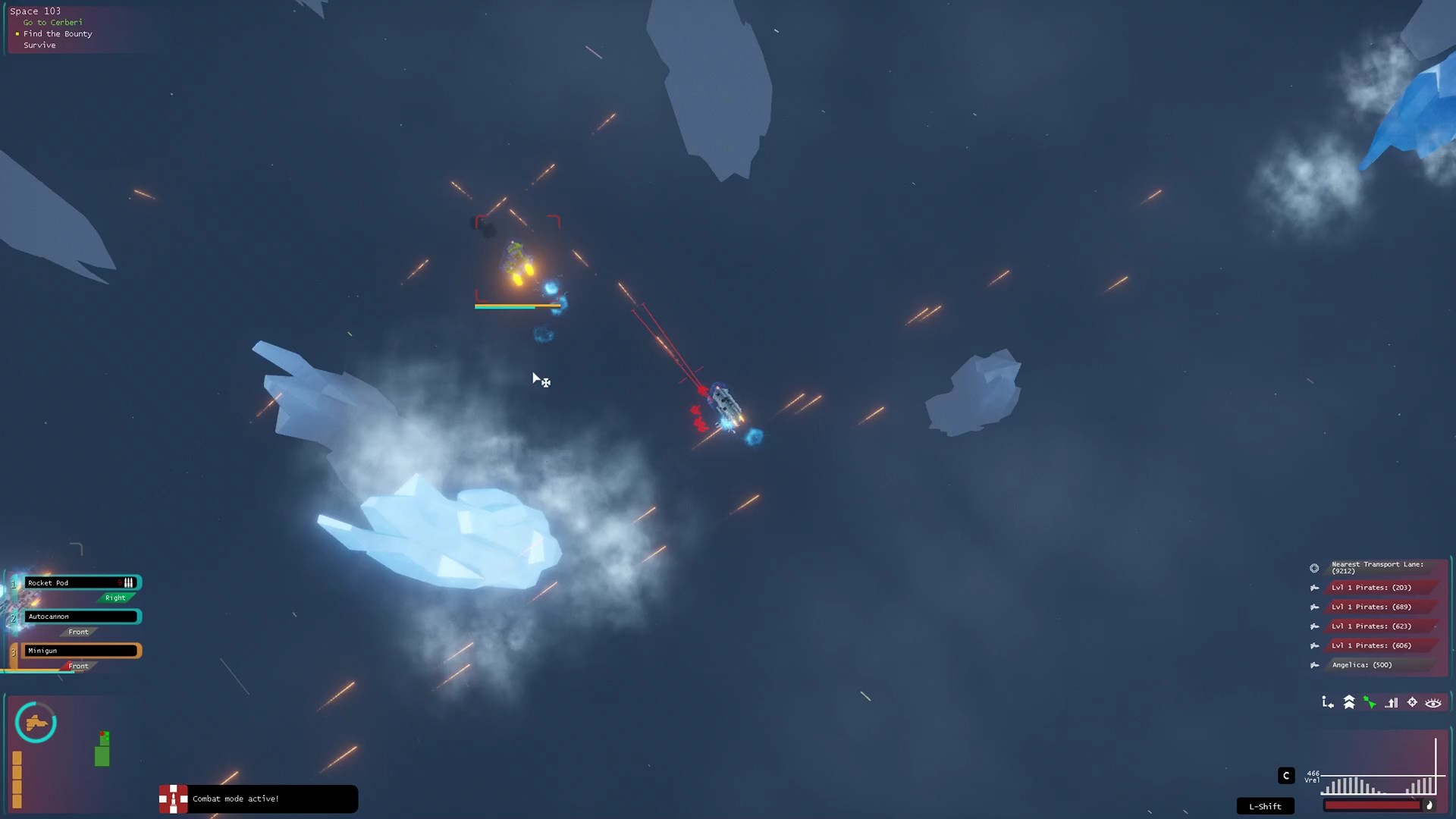
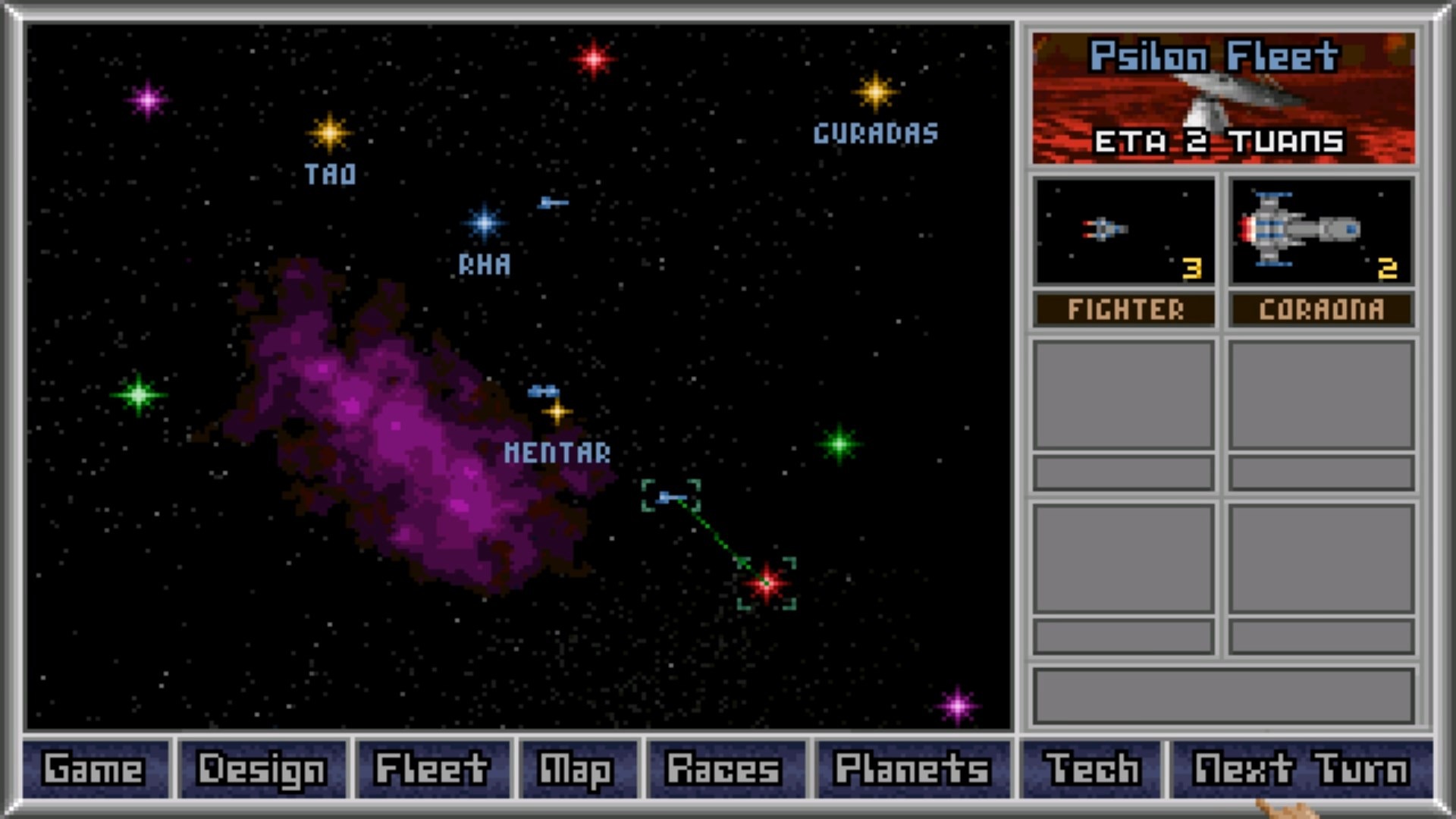
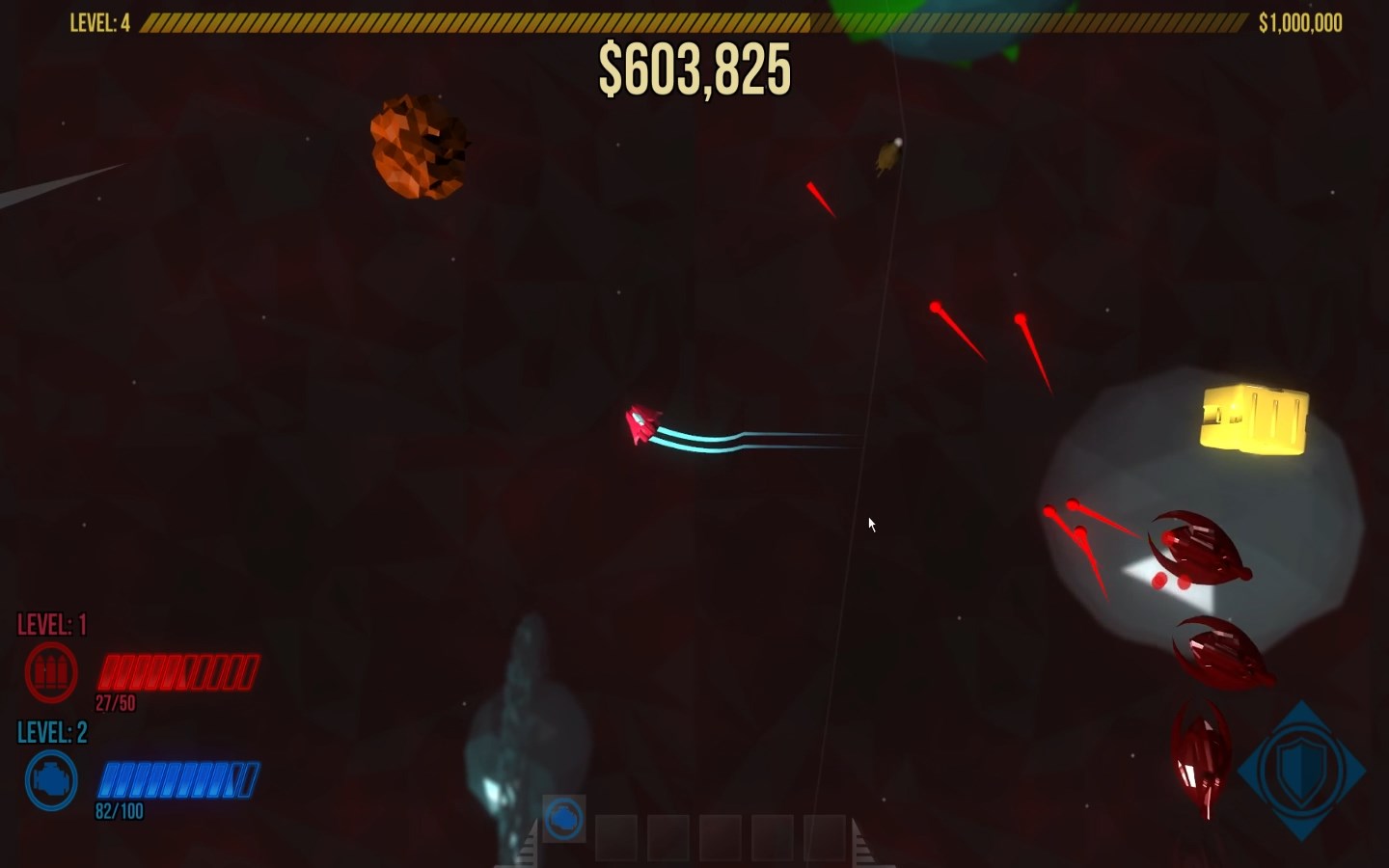
Sounds intriguing. Never was into sub games… But put that in space…
While reading this, all we could remember is that they abandoned Towncraft. So, we won’t be too excited until it’s actually finished.
Oh really? I’d never played that one so I had no idea…